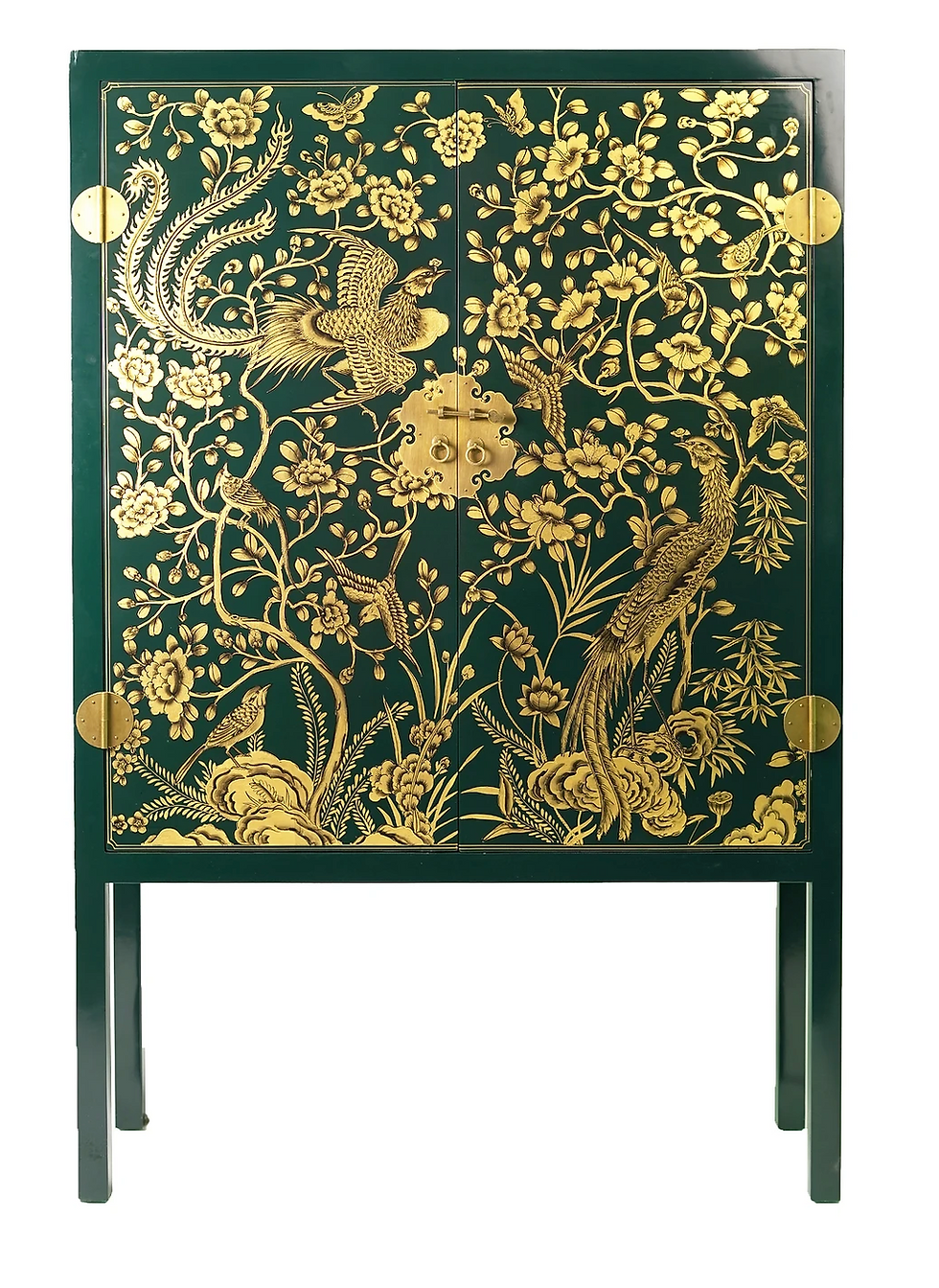Informative blog: Know more about Chinese art
- Dao's Den

- Jul 14, 2024
- 3 min read
Updated: Jul 21, 2024

Hey everyone! Thanks for all the support on our first blog! (BIG HUG)
A lot of you have been messaging us on Instagram, asking about the meanings behind the designs on our porcelain jars, ceramic stools, and cabinets.
I remember back in the UK during my college days, I didn't know anything about it. Growing up in a western culture was way different. It all started when I asked my mum why Chinese people love dragons—I thought it was just for design purposes or that emperors had dragon pets (lol). After that, I asked about the other symbols too, and it was so fascinating!
Chinese furniture and decor are renowned not only for their craftsmanship but also for the rich symbolism embodied in their carvings. These motifs are often drawn from traditional Chinese culture, mythology, and philosophy, serving as more than just decorative elements.
Here are the common art designs and images you'll find in Chinese decor and furniture...

DRAGON
Chinese dragons may look scary, but they are seen as benevolent beings that bring rain, symbolizing fertility and prosperity. Representing power, strength, and good fortune, dragons are typically depicted in dynamic, flowing forms, often chasing a pearl, symbolizing wisdom and enlightenment. These powerful mythological creatures have always been central to Chinese culture.

Did you know that in imperial times, it was against the law for common people to use dragon-related items? Only emperors were allowed to use them, as dragons symbolized their imperial power and authority.


PHOENIX
In some Marvel movies like X-Men and Captain Marvel in her Phoenix Force, the phoenix represents immense power. In Chinese culture, the phoenix symbolizes renewal, resurrection, and immortality, embodying the union of yin and yang. Often paired with the dragon, it represents the emperor and empress—a true power couple!

The phoenix is depicted with elegant, flowing feathers and a regal stance, often amidst flames, signifying rebirth from the ashes.


PEONIES
Peonies are depicted as large, lush blooms often in full bloom, conveying abundance and opulence. Also known as the "king of flowers," peonies symbolize wealth, honor, and high social status in Chinese culture.
They are also associated with romance and beauty. You can incorporate peonies anywhere—jars, vases, and furniture!


Waves and Clouds
Clouds and waves are two popular symbols in Chinese culture. In beautiful Chinese art, clouds represent the heavens and celestial realms, often symbolizing good fortune and heavenly blessings. They are depicted in flowing, swirling patterns often used as background motifs.
Waves, on the other hand, are often carved with repetitive, rhythmic patterns, sometimes integrating fish or dragons. They represent power and the fluid nature of life, as well as the unpredictability of fortune.

Fruits (Pomegranates, Peaches, Grapes)
Well, we all know that fruits are healthy, but in Chinese culture, they hold even deeper significance! Three fruits stand out as particularly important.
First, pomegranates symbolize fertility and abundance due to their many seeds. Second, peaches represent immortality and longevity. Lastly, grapes symbolize fertility, abundance, and prosperity. These fruits are often carved and painted in clusters or with leaves, beautifully integrated into larger scenes.

Cranes

Another bird that holds great significance in Chinese culture is the crane, representing longevity and immortality. Cranes are also symbols of wisdom and fidelity.
They are often depicted as graceful and elegant, frequently shown standing on one leg or in flight.

Bats
We all know that bats symbolize darkness and negativity, often depicted as vampires or monsters in movies like "Dracula." However, in Chinese culture, the word for bat (蝠, fú) sounds like the word for good fortune (福, fú), and bats represent happiness and good luck.
They are mostly depicted in pairs or groups, sometimes in conjunction with the "Five Blessings" (longevity, wealth, health, love of virtue, and a natural death).

These are just some of the motifs and symbols meticulously carved into Chinese furniture and painted on Chinese porcelain decor, each carrying layers of meaning and tradition. The use of these symbols transforms ordinary objects into pieces rich with cultural heritage, making Chinese furniture not just functional but also deeply meaningful.
.png)



Comments